Podcast: Play in new window | Download
Subscribe: Apple Podcasts | RSS
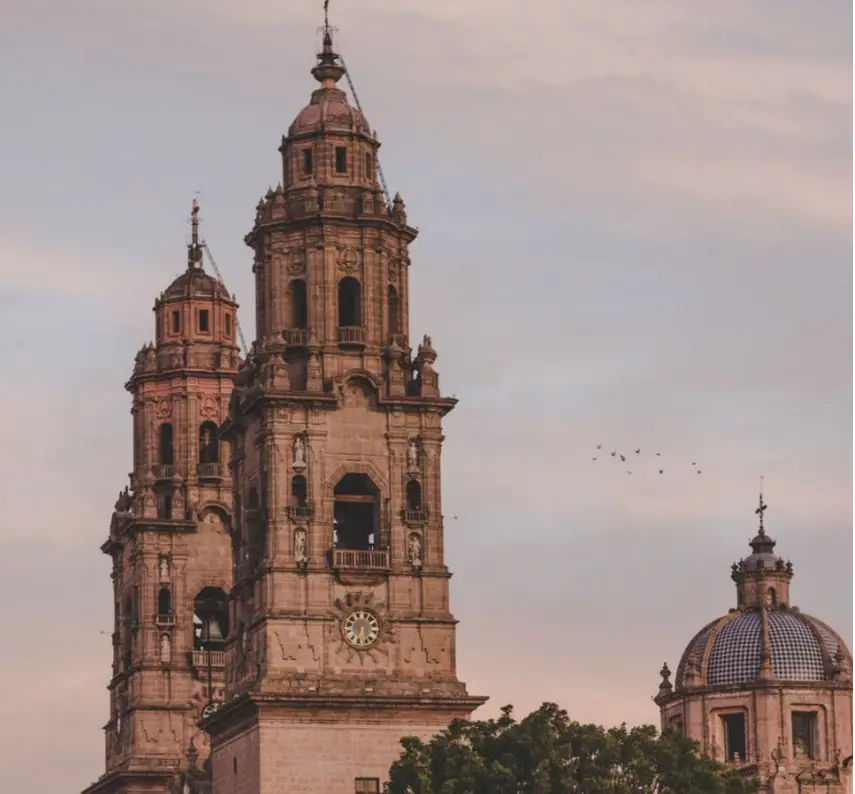 I’ll step out of the role of podcaster reading a research paper and go a little personal. In 1989 while a student at the University of New Mexico I spent a semester taking language and culture classes at a small institute in the heart of Morelia, Michoacán. I lived with a host family consisting of a single mom and 4 children. We were right in the middle of things among the 17th Century buildings of this wonderful colonial city. At night after I was finished with my homework and after the kids went to bed, the señora would grab a cup of black coffee and her cigarettes and we would settle down at the kitchen table and talk about everything, solving the world’s problems one at a time over the span of several evenings. In time away from school I would explore Morelia and the small towns surrounding it. Little did I know in 1989, but this time in Michoacán would form the initial layer of the foundation for the rest of my life. After I left college I would have a brief career in international business working for a US company in Latin America. Later, my business experience in Mexico led to my becoming an entrepreneur when I started an imports company in 1999 that I still own to this day. Then came Mexico Unexplained. It all began in Michoacán. The city of Morelia will always have a special place in my heart. In addition to having a rich history Morelia is also home to many legends. Here are 4:
I’ll step out of the role of podcaster reading a research paper and go a little personal. In 1989 while a student at the University of New Mexico I spent a semester taking language and culture classes at a small institute in the heart of Morelia, Michoacán. I lived with a host family consisting of a single mom and 4 children. We were right in the middle of things among the 17th Century buildings of this wonderful colonial city. At night after I was finished with my homework and after the kids went to bed, the señora would grab a cup of black coffee and her cigarettes and we would settle down at the kitchen table and talk about everything, solving the world’s problems one at a time over the span of several evenings. In time away from school I would explore Morelia and the small towns surrounding it. Little did I know in 1989, but this time in Michoacán would form the initial layer of the foundation for the rest of my life. After I left college I would have a brief career in international business working for a US company in Latin America. Later, my business experience in Mexico led to my becoming an entrepreneur when I started an imports company in 1999 that I still own to this day. Then came Mexico Unexplained. It all began in Michoacán. The city of Morelia will always have a special place in my heart. In addition to having a rich history Morelia is also home to many legends. Here are 4:
- The Angel Fountain
On the corner of García Obeso and Calle Guerrero in the heart of old Morelia there stands a tender statue of an angel kneeling in prayer on a pillar in the middle of a fountain. Called the “Pila del Ángel,” this structure was built by the Morelia City Council in 1871 to supply water to the residents who lived near the corner of the streets then called Tecolote and Alacrán. Back in the 1870s, the land was part of the garden that belonged to the Convent of San Agustín.
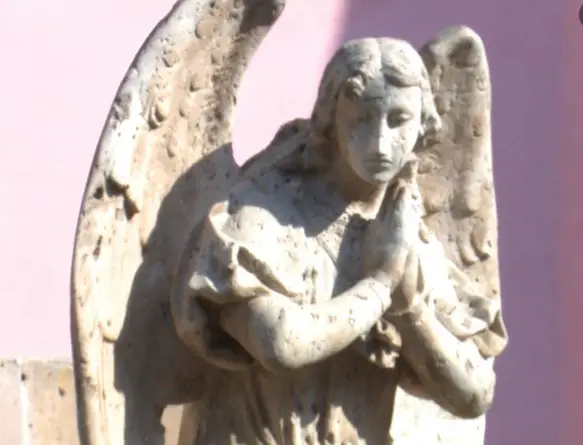 Sometime in the late 1800s, a woman who lived in the neighborhood went to Spain to visit her husband for an extended period of time. When the woman returned, she met with her lady friends at a fountain to tell them how wonderful Spain was. She told them that there were many very beautiful palaces, neighborhoods and shops. She ended up buying many beautiful dresses while abroad.
Sometime in the late 1800s, a woman who lived in the neighborhood went to Spain to visit her husband for an extended period of time. When the woman returned, she met with her lady friends at a fountain to tell them how wonderful Spain was. She told them that there were many very beautiful palaces, neighborhoods and shops. She ended up buying many beautiful dresses while abroad.
After a while the woman’s daughter told her that she was very thirsty. The woman, not yet finished with her stories, told her that in a while they would go home. A while passed and the girl insisted that she was thirsty, and the woman answered the same thing. After more time passed, the girl, desperate, insisted again to her mother that she was thirsty and wanted to go home. Her mother told her to drink water from the fountain to calm down. The little girl leaned over to drink and suddenly fell into the water. Not being able to sit up, she began to choke and scream.
The mother at first did not know what was going on, but when she did not see the little girl, she turned around and saw she was inside the fountain. The woman yelled for help, when, when suddenly, just a moment before the girl sunk beneath the water, the clouds parted and an angel from Heaven swooped down, rescued the girl, and gently carried her to the arms of her mother.
- The Treasure of the Morelia Cathedral
The crown jewel of the colonial architecture in the city of Morelia is, without a doubt, the Morelia Cathedral. Started in 1660, construction finished 84 years later in the year 1744. The cathedral combines both neoclassical and baroque styles and is dedicated to the Transfiguration of Jesus. As it stands in the oldest part of the city, there are structures around the beautiful building dating back centuries, including a nearly forgotten tunnel system that stops and starts underneath Morelia’s colonial core. On a slope of the Santa María hill there was once an entrance to a tunnel that crossed the city and was obstructed by a few immense stones.
A long time ago a band of thieves had decided to steal the wealth that they knew was in a special room in the Cathedral of Morelia. The riches were abundant, including much money and gems that the priest obtained through alms or donations from the wealthy families who tried to outdo one another by donating to the church.
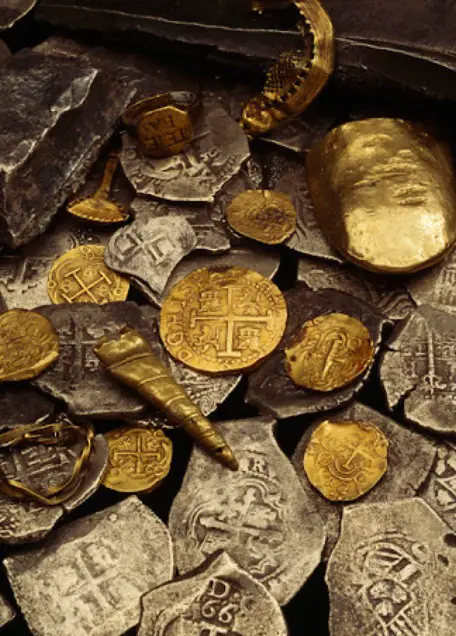 The thieves had decided to enter that room by accessing the Santa María tunnel, which was known to pass right underneath the Cathedral. They entered and when they arrived at the designated place, they began to excavate underneath the floor of the treasure room.
The thieves had decided to enter that room by accessing the Santa María tunnel, which was known to pass right underneath the Cathedral. They entered and when they arrived at the designated place, they began to excavate underneath the floor of the treasure room.
On three occasions the thieves managed to enter the room and steal without anyone noticing the missing items in the treasure. However, one day the bishop needed a specific piece that was part of the treasure and sent for it. When no one could find the valuable piece, the bishop gathered together a small group of religious novices who dedicated themselves to checking the inventory of the objects on hand. They immediately realized that many things were missing that should have been there.
Unknown to the clerics, the robberies had been going on for nearly three years, with the thieves stealing valuables a little bit at a time so as not to arouse suspicion. The authorities made investigations but could never capture anyone or find an explanation of how the treasure thieves had been able to enter. They called these mini heists the “enigmatic robberies.”
Even though the thieves knew that the authorities knew of the thefts and were looking for them, they resolved to continue their pilfering. On a couple more occasions they were able to take money and a chest full of gold coins. The people of the city were frightened and even thought that the robberies were caused by the Devil.
One night one of the monks entered the room and found three men who were putting gold into a bag. When the priest saw them, he alerted all the clerical personnel of the cathedral, who, together with the servants who joined them, entered the tunnel through which the thieves had fled to follow and capture them. All were quickly going through the tunnel when a sudden tremor caused its collapse, leaving the pursuers trapped.
Soldiers arrived to try to get them out, when they realized that ahead of the collapsed area, the tunnel separated into two parts: One of which went to the east and reached the basement of an inn, and the other took them to the entrance of the hill of Santa María. In none of them did they get the criminals, who seemed to have vanished.
It never became known what happened to them. However, sometime later, older gold and silver Spanish coins that were part of the cathedral treasure began to circulate throughout Morelia and in the Michoacán countryside.
- Rosy and La Pila de la Mulata
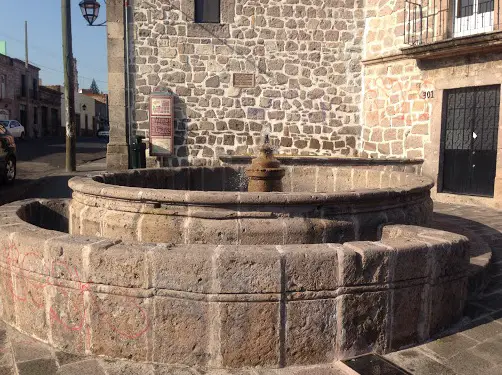 On the corner of Avenida Morelos Norte and Calle Cinco de Febrero, just a stone’s throw from the cathedral is a small neighborhood pila or fountain dating back hundreds of years into colonial times. Like the fountain of the first legend, this pila was used as a neighborhood water source where people could fill cannisters to take home water for household use. A girl named Rosy, who was around 18 years old, lived in the neighborhood and would pass by the fountain on a daily basis. Rosy was incredibly beautiful and in those times she was classified as mulata, having an ethnically Spanish father and a mother of African descent. Rosy used to buy tortillas at a store not far from her home and everyone who saw her go by was captivated by her. Over time she fell deeply in love with a young man named Álvaro, a neighborhood boy who had just finished his university studies. While Álvaro was smart and had a bright future ahead of him, he was somewhat mentally unstable, and known for violent outbursts. One day Rosy went to buy tortillas as was normal for her and on the way, she bumped into Álvaro. He invited her to his house and she agreed. When they got to Álvaro’s house, the couple argued, and their fight escalated. Álvaro then pulled out a dagger and lunged at Rosy. Terrified, she ran throughout the neighborhood until she tripped, fell into the fountain, and drowned. The next day a very distraught Álvaro sat on the ledge of the fountain in which Rosy had drowned. The young man sat there staring at the water through his tears when suddenly Rosy leaped out of fountain, grabbed Álvaro, and pulled him under, drowning him.
On the corner of Avenida Morelos Norte and Calle Cinco de Febrero, just a stone’s throw from the cathedral is a small neighborhood pila or fountain dating back hundreds of years into colonial times. Like the fountain of the first legend, this pila was used as a neighborhood water source where people could fill cannisters to take home water for household use. A girl named Rosy, who was around 18 years old, lived in the neighborhood and would pass by the fountain on a daily basis. Rosy was incredibly beautiful and in those times she was classified as mulata, having an ethnically Spanish father and a mother of African descent. Rosy used to buy tortillas at a store not far from her home and everyone who saw her go by was captivated by her. Over time she fell deeply in love with a young man named Álvaro, a neighborhood boy who had just finished his university studies. While Álvaro was smart and had a bright future ahead of him, he was somewhat mentally unstable, and known for violent outbursts. One day Rosy went to buy tortillas as was normal for her and on the way, she bumped into Álvaro. He invited her to his house and she agreed. When they got to Álvaro’s house, the couple argued, and their fight escalated. Álvaro then pulled out a dagger and lunged at Rosy. Terrified, she ran throughout the neighborhood until she tripped, fell into the fountain, and drowned. The next day a very distraught Álvaro sat on the ledge of the fountain in which Rosy had drowned. The young man sat there staring at the water through his tears when suddenly Rosy leaped out of fountain, grabbed Álvaro, and pulled him under, drowning him.
- The Ghost Hospital
This last segment is part urban legend and part internet creepypasta. Often told as the legend of “El Hospital Fantasma” or “The Ghost Hospital,” it is never clear whether this hospital still stands somewhere in Morelia or if was demolished long ago. The legend never mentions a name, so it could be any hospital, or no real hospital. Even the name “Ghost Hospital” is a bit vague because does it refer to a hospital full of ghosts or does it mean that it’s a phantom hospital that doesn’t really exist? Supposedly it is or was a place where deep inside its corridors and rooms, and spaces forgotten or closed off to current staff, countless ghosts and other supernatural presences thrive.
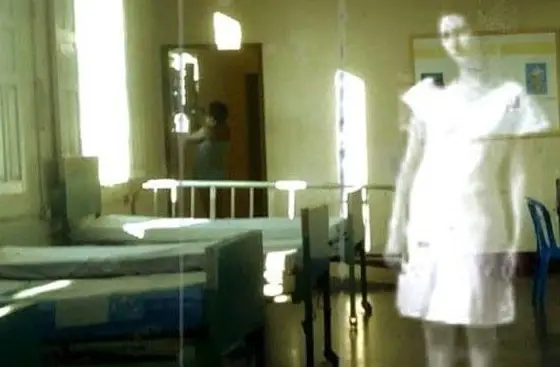 Security guards at this hospital allegedly have the most experience with strange occurrences in the recesses of this spooky place and have seen things when no people were around. Thus, the hospital has a hard time staffing for security.
Security guards at this hospital allegedly have the most experience with strange occurrences in the recesses of this spooky place and have seen things when no people were around. Thus, the hospital has a hard time staffing for security.
It is said that in the operating room of the hospital a man appears every night who incomprehensibly passes through the walls and on certain occasions pitiful screams are heard, which are considered to come from his distressed soul who had not yet achieved eternal rest.
In the receiving room of the morgue, to which the corpses of the deceased are taken, strange noises are frequently heard – sounds of broken glass and a squeak of the doors – as if someone were opening and closing them. Likewise, when visitors walk through that place, they perceive a horrendous sensation as if someone was watching all the time.
In the intensive care room on the eighth floor of the hospital, witnesses who have been able to observe this apparition report that at night a woman in a white coat appears who wanders through the corridors in total silence, and leaves in her wake, blood stains on the floor and walls that fade over time. Some say this is the ghost of a woman who was once a patient in that ICU and underwent a kidney transplant. The transplant didn’t take and out of desperation and misery the woman decided to commit suicide by throwing herself out of a window on that floor.
Not one of these stories from the hospital can be verified by any ghost hunting show and the hospital is not part of any walking ghost tour of Morelia for the simple reason that no one knows what hospital these stories belong to if any at all.
REFERENCES
Various online sources.
